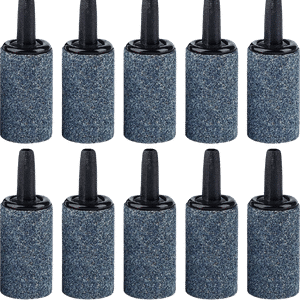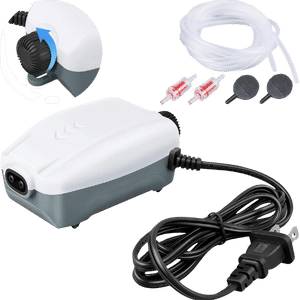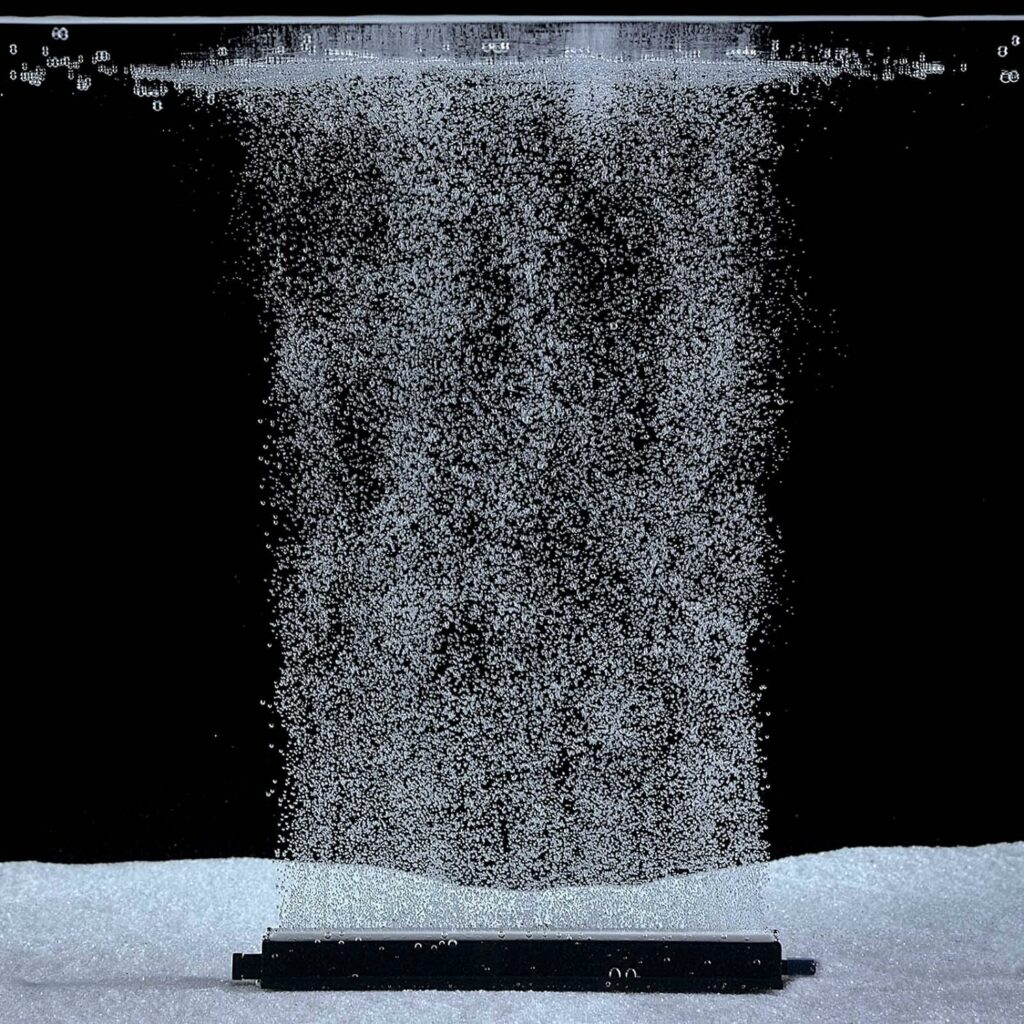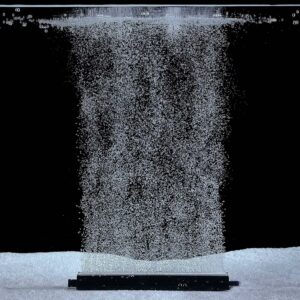How To Set Up an Air Stone, The Best And Easy Guide In 2024
If you’re an aquarium enthusiast or just starting out on your aquatic journey, you might have come across the term “Air Stone.”
But what exactly is an air stone, and what purpose does it serve in aquariums? Well, an air stone is a small device made of porous material that connects to an air pump and releases a stream of tiny bubbles into the water.
The main purpose of using an air stone is to improve oxygenation in the aquarium, ensuring a healthy and thriving aquatic environment. But the benefits don’t stop there! Air stones also contribute to better water circulation, prevent stagnant areas, and even add a visually appealing touch to your underwater paradise.
In this post, we’ll delve into the world of air stones, exploring their functions, types, and how to make the most of them in your aquarium setup. So, let’s dive in and uncover the wonders of air stones together!
Table of Contents 🦑
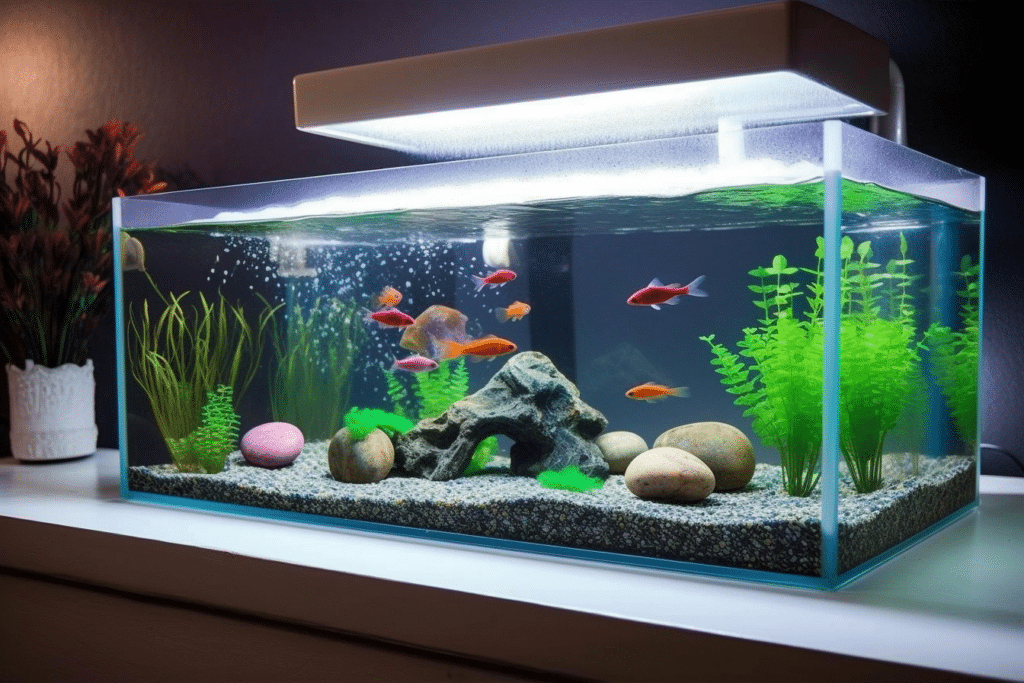
Setting Up an Air Stone 7 Simple Steps
Setting up an air stone inside your aquarium is a simple process. Follow these steps to ensure a proper installation:
-
Gather the necessary equipment: You will need an air pump to push air, airline tubing, and the air stone itself.
-
Connect the airline tubing to the air pump: Attach one end of the tubing to the outlet port of your air pump.
-
Attach the other end of the tubing to the air stone: Insert the tubing into the designated opening on the air stone. Ensure a secure connection.
-
Position the air stone in the desired location: Place the air stone at the bottom of your aquarium or in a location where you want to create a specific visual effect. You can use suction cups or other aquarium-safe accessories to hold the air stone in place.
-
Connect the air pump to a power source: Plug in the air pump to activate it. This will begin the airflow and create bubbles in the aquarium through the air stone.
-
Adjust the airflow: Use the control valve on the air pump, if available, to regulate the airflow. Adjust it to achieve the desired level of aeration in your aquarium.
-
Monitor and maintain: Regularly check the air stone and tubing for any signs of blockage or damage. Clean or replace them as needed to ensure optimal performance.
By following these steps, you can easily set up an air stone in your aquarium and enjoy the benefits of increased oxygenation and visual appeal in your aquatic environment.
Understanding Air Stones
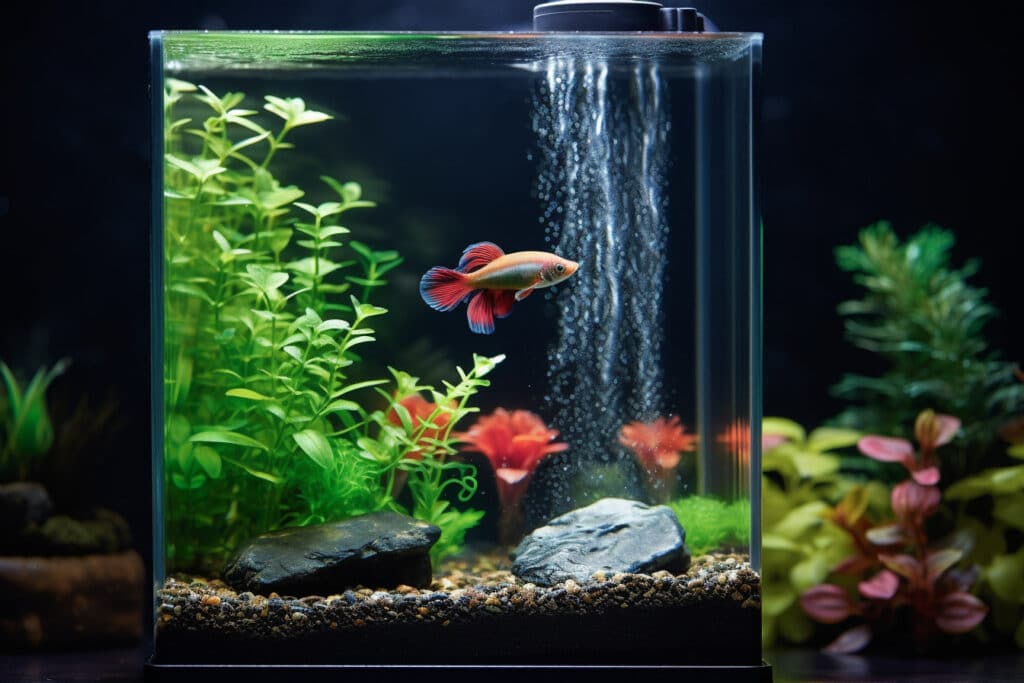
To truly appreciate the value of air stones in aquariums, it’s important to understand how they work and the impact they have on the aquatic ecosystem.
Air stones function by breaking up the surface tension of the water, allowing oxygen to dissolve more easily and facilitating gas exchange. This process is crucial for the well-being of your aquatic inhabitants, as it helps maintain optimal oxygen levels necessary for their respiration.
Moreover, air stones enhance water circulation, preventing stagnant areas and promoting a healthy environment for fish and plants alike.
By understanding the inner workings of air stones, you can harness their power to create a thriving aquarium ecosystem that is both visually captivating and conducive to the overall health and happiness of your aquatic friends
What is an Air Stone?
An air stone is a small device commonly used in aquariums to enhance aeration and water circulation. It is typically made of porous materials such as glass or ceramic and is connected to an aquarium air pump through airline tubing.
When the air pump is activated, it forces air through the air stone, creating a steady stream of fine bubbles that rise to the surface of the water. These bubbles break the surface tension, allowing for the exchange of gases, particularly oxygen and carbon dioxide. The result is improved oxygenation of the water, creating a healthier and more oxygen-rich environment for the aquatic life in the aquarium.
Air stones come in various shapes and sizes, allowing for customization based on the specific needs of the aquarium and its inhabitants.
How Do an Aquarium Air Stones Work?
An aquarium air stone works by using the force of air generated by an air pump to create bubbles in the water. The air stone is connected to the air pump through the airline tubing. When the air pump is turned on, it push air through the tubing and into the air stone.
The air stone has a porous structure that allows the air to escape in the form of tiny bubbles. These bubbles rise to the surface of the water, creating agitation and movement in the tank.
As the bubbles rise, they disturb the surface of the water, breaking the surface tension. This allows for the exchange of gases between the water and the air. Oxygen from the air is dissolved into the water, while carbon dioxide and other gases are released from the water into the air. This process helps to increase the oxygen levels in the aquarium, providing vital oxygen for the fish and other aquatic inhabitants.
Additionally, the movement of the water caused by the bubbles helps to improve water circulation and prevent stagnant areas in the tank. This circulation promotes the distribution of oxygen, nutrients, and heat throughout the aquarium, creating a more balanced and healthy environment for aquatic life.
Overall, an air stone is an effective tool for enhancing aeration and water movement in an aquarium, improving oxygenation, and promoting the overall well-being of the aquatic inhabitants.
What are the Different Types and Sizes of Air Stones Available?
There are several different types and sizes of air stones available to cater to different aquarium setups and personal preferences. Here are some common types and sizes of air stones:
Gray Standart Air Stone
These are the most commonly used air stones and come in various shapes and sizes. They are typically made of porous materials like silica air stones, ceramic, or synthetic materials and produce a steady stream of small bubbles.
These air stones are the go-to choice for many due to their reliable performance, durability, and ease of use.
Diffuser Air Pump
Diffuser air pump are designed to create finer bubbles, resulting in increased surface agitation and oxygenation. They are often made of fine membrane or micro-pore materials, allowing for efficient gas exchange.
Interested in a luxurious bubble experience? Diffuser air stones generate some of the finest bubbles you’ll see.
Bubble Walls
Bubble walls are long, flexible tubes with multiple small air outlets. They can be attached to the back or side of the aquarium to create a visually appealing curtain of bubbles.
Turn your aquarium into a wonderland, Carefree Fantasy Bubble Wall—where fun meets functionality
Bubble Disks
Bubble disks are flat, circular air stones with numerous tiny holes on the surface. They produce a wide distribution of bubbles, creating a beautiful and uniform pattern.
Generates a broad array of bubbles, resulting in a visually stunning and evenly dispersed pattern
Nano Air pumps Stones
Nano air stones are specifically designed for small aquariums or betta fish tanks. They are small in size and provide adequate aeration for compact setups.
Designed for small aquariums and betta fish habitats. Nano air stones are the mini-maestros of underwater aeration
When selecting an aquarium air stone, consider the size of your aquarium, the desired level of aeration, and the aesthetic appeal you want to achieve. It’s also important to choose an air stone that is compatible with the air pump and tubing you have in your setup.
The Importance of Air Stones in Aquariums
Air stones play a crucial role in maintaining a healthy and well-balanced aquarium environment. They serve multiple important functions that benefit the overall well-being of aquatic inhabitants.
Oxygenation
Firstly, air stones promote proper oxygenation of the water by increasing surface agitation and enhancing gas exchange. This is especially beneficial for fish and other aquatic organisms that rely on dissolved oxygen to survive.
Water Circulation
Secondly, air stones help to improve water circulation, preventing stagnant areas and creating a more uniform distribution of heat and nutrients throughout the tank. This helps to prevent the formation of “dead zones” and encourages the growth of beneficial bacteria. Additionally, air stones contribute to maintaining water quality by facilitating the removal of harmful gases, such as carbon dioxide, and promoting the release of excess dissolved gases. They can also assist in preventing the accumulation of debris and detritus by creating gentle currents that aid in the filtration process.
Overall, the presence of an air stone in an aquarium is essential for promoting the health, vitality, and overall balance of the aquatic ecosystem.
Aesthetic Appeal
Thirdly, air stones not only serve important functional purposes but also add a touch of visual appeal to the aquarium.
One of the most delightful aspects of using an air stone is the mesmerizing display of bubbles it creates. As the air is pumped through the stone, tiny bubbles rise to the water’s surface, creating a captivating and dynamic scene. These bubbles not only provide a delightful visual spectacle but also add a sense of liveliness and movement to the aquarium.
They can create a calming and relaxing ambiance, reminiscent of a bubbling stream or a serene underwater world. The gentle release of bubbles from the air stone adds an element of tranquility and charm to the overall aesthetics of the aquarium.
Whether you have a small fish tank or a larger aquarium, the addition of aquarium air stone can transform the look and feel of your underwater paradise, making it a captivating centerpiece that draws attention and enhances the overall beauty of your aquatic habitat.
How To Choose the Right Air Stone For Your Aquarium Fish Tank
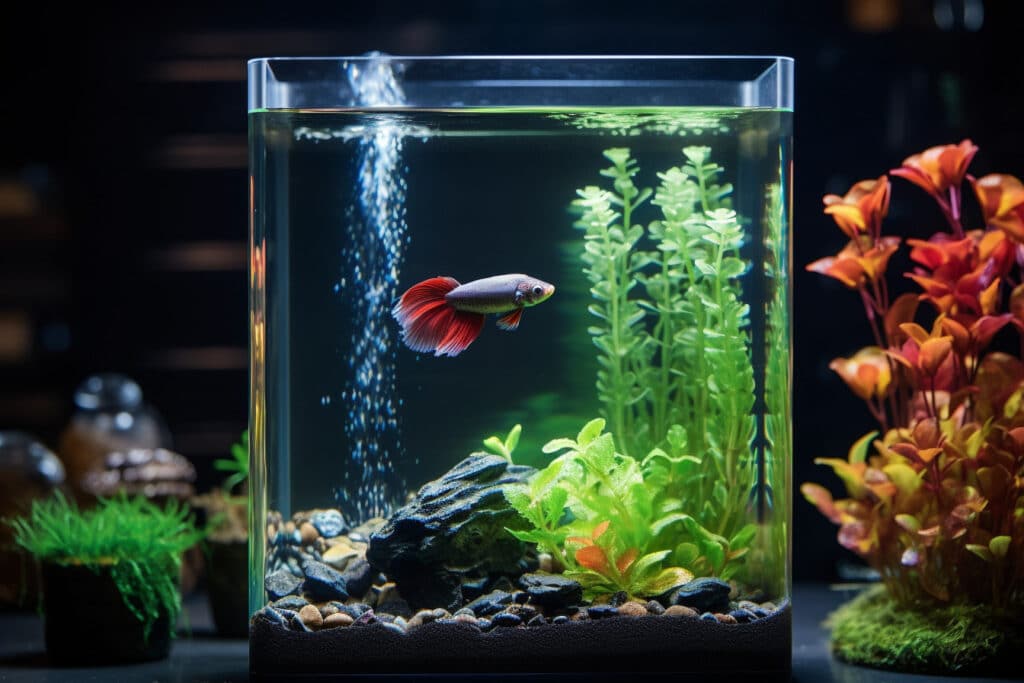
When it comes to choosing the right air stone for your aquarium, there are a few factors to consider.
-
Determine the size of your tank and the desired level of aeration. Smaller tanks may require a smaller air stone, while larger tanks may benefit from a larger one.
-
Consider the type of air stone, such as a diffuser, bubble wall, or airstone disc, based on your aesthetic preference and the level of oxygenation you want to achieve. Take into account the material of the air stone, as some are more durable and long-lasting than others.
-
Check your budget and choose an air stone that fits within your price range while still meeting your aquarium’s needs.
By carefully considering these factors, you can choose the right air stone to optimize the aeration and visual appeal of your aquarium.
Troubleshooting Common Issues
While air stones are generally reliable and easy to use, there are a few common troubleshooting and issues you may encounter. Here are some of them:
Insufficient Airflow
If you notice that the bubbles produced by the air stone are weak or inconsistent, check the air pump. It may not be generating enough air pressure. Ensure the air pump is working properly and adjust the airflow if necessary.
Blockage or Clogging
Over time, air stones can become clogged or blocked by debris, algae, or mineral deposits. This can restrict the airflow and reduce the efficiency of the air stone. Regularly clean the air stone and inspect the airline tubing for any obstructions.
Noisy Operation
Some air stones may produce noise due to vibrations caused by the air pump. To minimize noise, place the air pump on a soft surface or use rubber pads to dampen vibrations. You can also consider using an air stone with noise-reducing features.
Air Leaks
Air leaks can occur at the connections between the airline tubing, air pump, and air stone. Inspect the connections and ensure they are secure and airtight. Replace any damaged or worn-out parts to prevent air leaks.
Uneven Distribution of Bubbles
If you notice that the bubbles are not evenly distributed across the air stone, it could be a result of an uneven airflow. Adjust the airflow or reposition the air stone to achieve a more balanced bubble distribution.
By addressing these common troubleshooting issues, you can ensure that your air stone functions optimally and provides the desired aeration and visual effects in your aquarium.
Conclusion
Air stones are popular accessories used in aquariums to enhance aeration and provide various benefits. They are small devices that release a stream of bubbles into the water, improving oxygen exchange and creating visual interest.
They come in different types, sizes, and materials, allowing for customization based on individual aquarium needs.
They are easy to set up and can be connected to an air pump using airline tubing. Air stones play a crucial role in maintaining water quality, promoting healthy fish and plant life, and preventing issues like stagnant water and algae growth.
They also add aesthetic appeal to the aquarium, with the bubbles creating a mesmerizing and dynamic display.
So, whether you’re a seasoned aquarium enthusiast or just starting, Experiment with different types, sizes, and placements to see what works best for your aquarium setup.
Embrace the benefits they offer in terms of oxygenation, water circulation, and visual appeal.
Get creative with your designs and enjoy the mesmerizing bubbles that dance through your tank.
By incorporating an air stone into your aquarium, you can enhance the overall health and beauty of your aquatic ecosystem. So go ahead, give it a try, and let your imagination soar as you discover the wonders of air stones in your aquarium setup. Happy bubbling!
Related Posts

How To Choose The Perfect Betta Fish Tank
Go To: Home How To Choose The Perfect Betta Fish Tank Selecting the ideal Betta
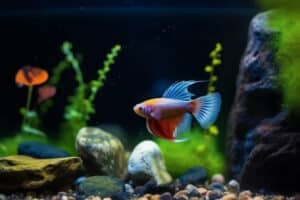
How to Choose Aquarium Rocks for Betta Fish Tanks, The Best Guide.
Aquarium Rocks for Betta Fish Tank Setting up a Betta fish aquarium is more than

How To Choose The Best Aquarium Filter for Your Fish Tank
Home How To Choose The Best Aquarium Filter for Your Betta Tank A properly set

